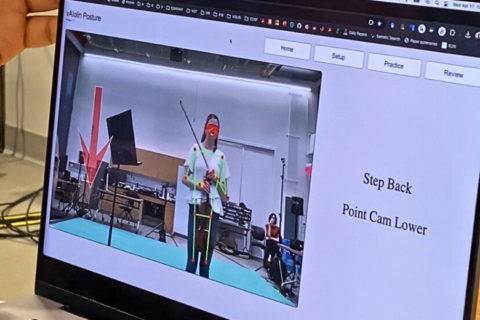Why bottlenose dolphins visit the Chesapeake Bay has been largely a mystery for a long time, but Maryland scientists are starting to unlock the marine mammals’ secrets.
Dr. Helen Bailey is with the Chesapeake Biological Laboratory (CBL), which is part of the University of Maryland Center for Environmental Science.
In 2017, she and other researchers at the lab rolled out the Chesapeake Dolphin Watch app, which allows anyone to report their dolphin sightings. So far, more than 7,500 dolphin spotters have used it.
“That really has been so crucial to our research to have this amazing network of observers across the entire bay to learn what the dolphins are doing and where they’re going in the bay,” Bailey said at a Zoom presentation this week.
She thinks some 1,000 dolphins make their way into the bay each year. They can be found throughout the bay, although they don’t usually go very far up the rivers into fresher water.
“We really changed the paradigm that dolphins are just very occasional visitors to the bay to they are regular inhabitants of the Chesapeake Bay,” Bailey said.
It’s time for WOW: Where on Wednesday! Dolphins were reported in the upper Bay region for the first time this year – video courtesy of Jack W.
Sound on to hear voices that capture how we all feel inside when we see dolphins! #WhereOnWednesday #DolphinWatch #ChesterRiver pic.twitter.com/CkimTvFsnK— DolphinWatch UMCES (@DolphinWatch_CB) June 3, 2020
Last year, 989 sightings were reported through the app, and 728 of them were confirmed by the researchers. Dolphin sightings reported through the app increased in 2020, despite COVID-19-related restrictions on recreational boating.
The laboratory’s researchers have placed underwater microphones called hydrophones at various locations in and near the bay to listen for sounds dolphins make. One is called a signature whistle.
“These are like dolphin names,” Bailey said. “Within the first year of a dolphin’s life, it will develop its own signature whistle. Unlike us where we name our children, dolphin calves get to pick their own name.”
With that knowledge and their hydrophones, the scientists have so far identified more than 1,500 individual dolphins in the Atlantic Ocean off the Maryland coast, 300 individuals in the Potomac River, and 21 more in the Rhode River.
Using hydrophones is a new way of identifying the animals. The traditional way is by photographing their fin markings.
One of Bailey’s students is studying the correlation between dolphin sightings and water temperature, salinity and tides.
“When we have warmer water temperatures, there are more dolphins, which is probably related to the fact that they’re giving birth here, as well as to what their prey is doing and where they’re finding fish,” Bailey said.
Another one of her students will soon start collecting water samples in search of fish DNA. The goal is to see if dolphins are attracted to a particular species of fish.
“This is work that’s going to be starting this summer, in fact my student’s going to start taking water samples next week,” Bailey said.
Dolphin-watching season is underway in the bay, with sightings usually peaking between May and October. Researchers hope more people will download the app and use it to let them know what they’re seeing.








